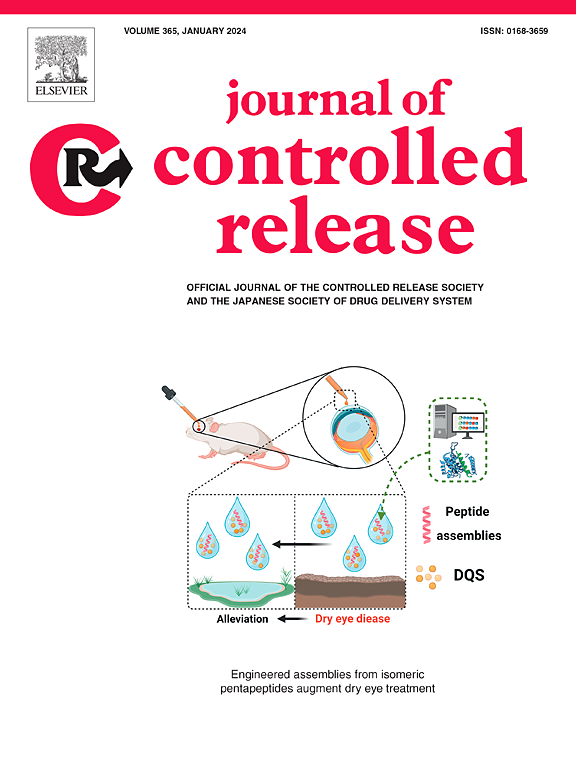A fusion protein that targets antigen-loaded extracellular vesicles to B cells enhances antigen-specific T cell expansion
IF 10.5
1区 医学
Q1 CHEMISTRY, MULTIDISCIPLINARY
引用次数: 0
Abstract
Extracellular vesicles (EVs) have the potential to modulate immune responses via their cargo molecules and are being explored as vehicles in cancer immunotherapy. Dendritic cell-derived EVs can induce antigen-specific immune responses leading to reduced tumor burden. This response was shown to depend partially on B cells. EVs can be targeted to certain cells or tissues, and EVs from Epstein-Barr Virus (EBV) infected cells were shown to carry the EBV glycoprotein GP350 on their surface and target human CD21 (hCD21) on B cells. We therefore investigated whether targeting EVs to B cells via this mechanism could improve antigen-specific immune responses. A soluble fusion protein containing the phosphatidylserine-binding domain (C1C2) of lactadherin and hCD21-binding domain (D123) of GP350 was used to decorate and target EVs to B cells. D123-decorated EVs increased in vitro B cell targeting 5-fold compared to EVs decorated with a non-targeting control protein or undecorated EVs. Furthermore, in vivo, D123-decoration did not alter the biodistribution of EVs across organs but specifically targeted them to B cells in the spleen, blood and lymph nodes of hCD21-transgenic mice. Immunization with hCD21-targeted, OVA-loaded EVs resulted in a higher percentage of antigen-specific CD8+ T cells compared to untargeted EVs. Our data show that D123-decorated EVs efficiently target B cells and improve antigen-specific T cell responses in vivo, which could be explored in future therapeutic applications.


求助全文
约1分钟内获得全文
求助全文
来源期刊

Journal of Controlled Release
医学-化学综合
CiteScore
18.50
自引率
5.60%
发文量
700
审稿时长
39 days
期刊介绍:
The Journal of Controlled Release (JCR) proudly serves as the Official Journal of the Controlled Release Society and the Japan Society of Drug Delivery System.
Dedicated to the broad field of delivery science and technology, JCR publishes high-quality research articles covering drug delivery systems and all facets of formulations. This includes the physicochemical and biological properties of drugs, design and characterization of dosage forms, release mechanisms, in vivo testing, and formulation research and development across pharmaceutical, diagnostic, agricultural, environmental, cosmetic, and food industries.
Priority is given to manuscripts that contribute to the fundamental understanding of principles or demonstrate the advantages of novel technologies in terms of safety and efficacy over current clinical standards. JCR strives to be a leading platform for advancements in delivery science and technology.
 求助内容:
求助内容: 应助结果提醒方式:
应助结果提醒方式:


